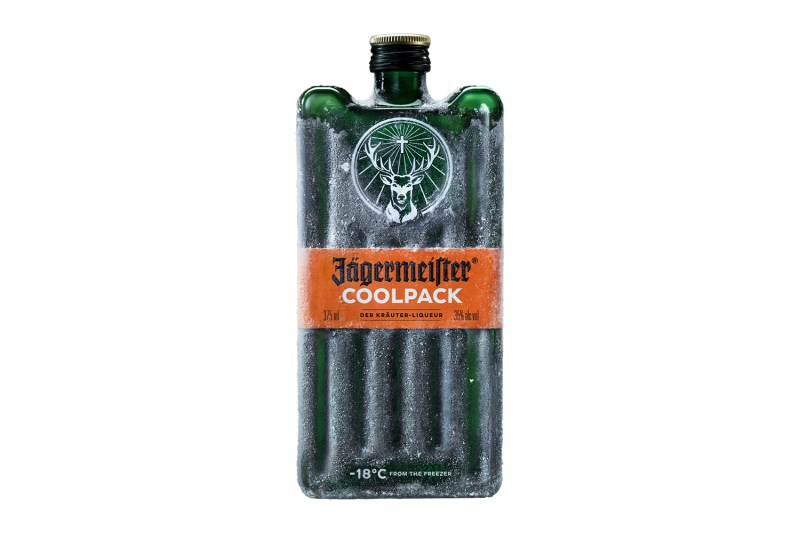No, that’s not a freezer pack in our cooler, we’re just happy to drink Jäger again. New non-glass packing called “Coolpacks” have been released by the German-born booze brand and are designed to be tossed in a cooler or backpack and taken outside this summer.
Made out of lightweight PET material in the brand’s signature forest green color, Jägermeister’s new packaging resembles rectangular freezer packs, making it all too easy to drink (ice cold) Jäger literally anywhere.
In fact, the herbal liqueur traditionally enjoyed after meals to aid digestion is recommended to be enjoyed at -18 degrees Celsius. Hence the commercials of moody German bars serving Jägermeister in shot glasses made of ice. But you don’t need ice anymore because it’s the damn bottle now.

Jäger says you should toss the Coolpack in the freezer and let it chill before an adventure or day-trip — purportedly the new packings cools your booze faster than traditional glass.
Plus, you can take the drink to concert venues, pools, campsites, and other outdoor spaces that don’t allow glass. (Who doesn’t want to rage on Jäger at the free bluegrass concert your town hosts every Friday night?)
“When creating the Coolpack bottle design, we wanted to create something that allowed our Jägermeister fans to enjoy the beloved herbal liqueur on-the-go, no matter the destination,” Director of Innovation at Jägermeister Jack Carson said in a statement.
Which is brilliant because warm alcohol sucks.

This is the first-ever non-glass line extension from the brand and quite honestly, the packaging looks badass. The recipe itself hasn’t changed and still contains a complex 56 herbs and spices — including citrus peel, poppy seed, and licorice. If you’re into the Fernet craze, you should revisit Jäger because both are digestifs with deep herbal sweetness and bitterness.
Coolpacks aren’t meant to replace existing glass bottles, but instead act as a supplemental on-the-go container. Because if I had a dollar every time I said, “I wish I could take this bottle of Jäger with me,” well … now I’ll have reason to think that way. Watch out, Sunday brunch!
But do people really want Jäger bombs during a hike, swim, BBQ, or festival? You might be surprised to learn it’s the No. 1-selling imported liqueur in the United States and was created by an enthusiastic hunter, Curt Mast the OG distiller.
BTW, Jäger does not contain any deer or elk blood, despite rumors you read on the internet.
It’s somewhat ironic that Jägermeister developed street cred for being paired with Red Bull at college parties, because the spirit is rich and rooted in the outdoors. The advent of Coolpacks suggests sipping on this herbal sizzurp in a different, more adult and adventurous, fashion. In a word: to enjoy its complexity (not shoot it). And enjoy it freezer pack-cold.


